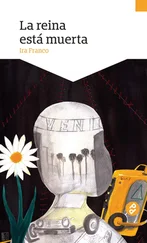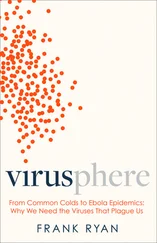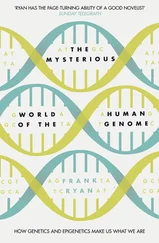At the end of the slug’s life cycle, when spring is stirring the torpid animals back into life, and soon after the eggs for the future generation have been laid, the adult slugs begin to sicken and die. All of a sudden the viruses that previously appeared innocuous now teem and swarm throughout its tissues and organs. This is no chance observation since viruses are found to be multiplying in every dying slug, and virulent pathological changes throughout the tissues would point to an aggressive viral attack. 4These viruses are not invaders coming in out of the oceans since exactly the same pattern is seen in slugs that have been maintained in aquaria, in artificial sea water. It is hard to draw any conclusion other than that this attack is brought about by the very retroviruses that appear to inhabit the slug’s own genetic make-up, those same enigmatic viruses that enabled the genetic transfer of the chloroplast genes from the alga, and made possible the solar-powered life cycle. If so, we appear to be witnessing a programmed annihilation of the entire adult population, as if the viruses that had previously enabled the slug’s somewhat idyllic life cycle had now switched behaviour and were acting out some more brutal pattern of programming, culling the now-redundant adults after they had laid the eggs for the start of a new generation.
If the circumstantial evidence is indeed correct, we are looking at an illuminating example of a powerful evolutionary mechanism known as “aggressive symbiosis”. A chance discovery amid perilous circumstances led to my proposing this concept many years ago – though I little realised back then that it would play such a major role in the future direction of my professional life.
On Monday 25 July 1994, I happened to be interviewing Terry Yates, then Professor of Mammals at the University of New Mexico. He was explaining to me how he came to be linked with a newly emergent plague that had broken out in New Mexico in May of the previous year. This all-American plague was still killing one in two of the people it infected in the surrounding towns and countryside as Yates showed me round the cavernous atrium of the New Mexico Museum of Southwestern Biology, its walls decorated with the splendidly horned heads of Alaskan rams and African antelopes, and its floor space crammed with specimen cupboards that, when drawn, displayed rows of tiny carcasses – bats with their wings extended to full stretch, and rodents, tens of thousands of tiny bodies, all neatly arranged, from whiskers to tautly stretched tails. The collection was not merely exhaustive in numbers, it was also comprehensive in time, dating back to the 1880s when naturalists had accompanied the new railroads out west. Hidden away in those myriad rows of cupboards, with their meticulously tagged corpses, lay the answer to the emergence of the plague outbreak.
Those extreme circumstances began on 14 May 1993 with an ambulance screaming westwards through the dry desert roads of New Mexico, heading for the Indian Health Service Hospital in Gallup. The ambulance crew had radioed ahead so that, as the ambulance reversed back into the admissions bay, the emergency medical staff, under the direction of Dr Bruce Tempest, were already waiting by the entrance to lift the occupant, a young Navajo male, onto a gurney and rush him to the emergency area, where he was subjected to an emergency chest x-ray even as cardiopulmonary resuscitation began. The chest x-ray showed a bizarre picture – instead of the normal, slightly feathery transparency of healthy lungs, the young man’s chest showed a solid opaque white. The air sacs had been flooded with some pathological process, whether fluid or pneumonic exudates, leaving no room at all for air to get through. In effect, he was drowning in his own body’s secretions. Resuscitation was unsuccessful and the young man was pronounced dead right there in the emergency room.
In such tragic circumstance arrived a new or “emerging” plague into the Four Corners States of New Mexico, Arizona, Utah and Colorado. Although it began in the territory of the Navajo Nation, it soon manifested in the non-Navajo areas of the other states, and spread far and wide throughout the rest of America. But the epicentre was always focused on the desert areas of New Mexico and Arizona, where it terrified the local community, often infecting previously fit young people who could be reduced from rude good health to death, with whited-out lungs, in 24 hours. When I first arrived in New Mexico, the plague was still rampant, with the entire intensive care unit at the University Hospital in Albuquerque devoted to looking after newly diagnosed cases. Through intensive modern investigation and devoted medical management by the medical staff in various cities and hospitals, the death rate had been clawed back from an initial 70% to something closer to 50%. My purpose in coming to New Mexico was to examine new, or “emerging plagues”, and particularly those caused by viruses, such as Ebola and HIV-1, as part of the researches for my book, Virus X , 5and so the emergence of this all-American plague afforded me a rare opportunity to examine the most intensive modern medical and scientific response, in day-to-day detail. I found that the investigation of the plague, and the medical management of its victims, was still at its height, and I was duly grateful to my hard-pressed and dedicated colleagues, who allowed me to sit in with them in their clinical meetings and scientific experiments.
I knew that scientists working in the Special Pathogens’ Branch of the Centers for Disease Control in Atlanta – the world-famous plague hunters – had discovered that the Four-Corners’ epidemic was caused by a hitherto unknown virus. Here then was the opportunity to see for myself where such emerging viruses came from in nature, and why they behaved as aggressively as they so often did when they encountered a new host, such as our human species. In Albuquerque I would spend some time observing the doctors in the University Hospital, fighting to save the lives of infected patients. Here they did me the great courtesy of allowing me to interview victims and their relatives, with the normal medical confidentiality, and to witness for myself the harrowing experience of contracting an emerging plague virus. I travelled to Atlanta to observe the work of the virologists and geneticists at the Centers for Disease Control, where they had first realised that they were dealing with a newly emerging virus, which was a member of the genus of viruses known as the “hantaviruses”, using molecular techniques only 13 days after the onset of the epidemic. It took them six more months to see the actual virus, which would subsequently be called the Sin Nombre hantavirus – the hantavirus with no name. I sat in on the online discussions between the virologists and the epidemiologists at CDC and the internists and medical investigators in Albuquerque. I found myself gazing with curiosity at images of the new virus taken with the electron microscope, which looked as innocuous as minuscule balls of cotton wool. I moved on to California, where I interviewed virologists who had investigated the first African outbreak of Ebola and who had been intimately involved with the investigation of the emerging virus we now know as HIV-1, the cause of the AIDS pandemic. It was towards the end of my exploration of the Sin Nombre outbreak, and after I had collected a great many interviews with the scientists investigating it, that I returned to Albuquerque to talk toTerry Yates, one more interview as I supposed among many, when I wanted to look at what the biologists had discovered about the animal source of the virus.
I knew by then that the virus that was so lethal in people had come from the commonest rodent in America, the humble deer mouse, the equivalent of the common field mouse back in the UK. And in that conversation, I sensed the ground shift beneath my feet, as I listened with a growing astonishment to the slightly built and dark-haired Yates as he explained, with a fast and engaging Kentuckian accent, his own take on plague viruses, and hantaviruses in particular.
Читать дальше












